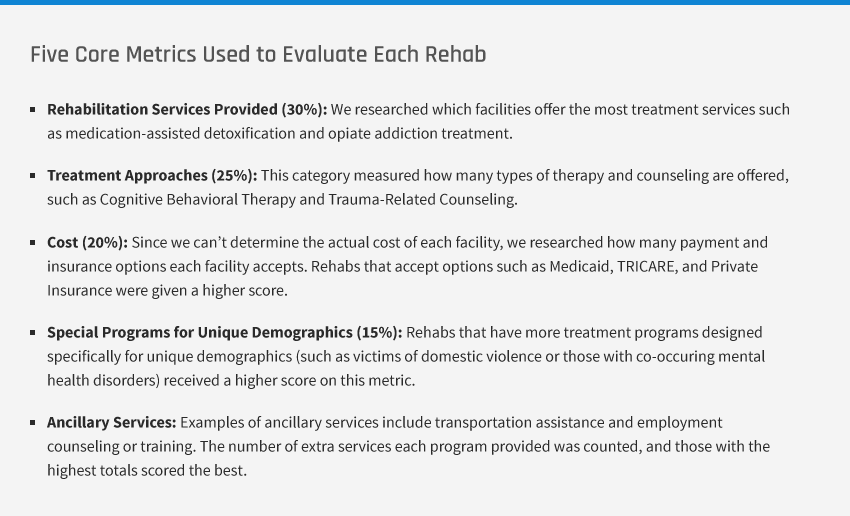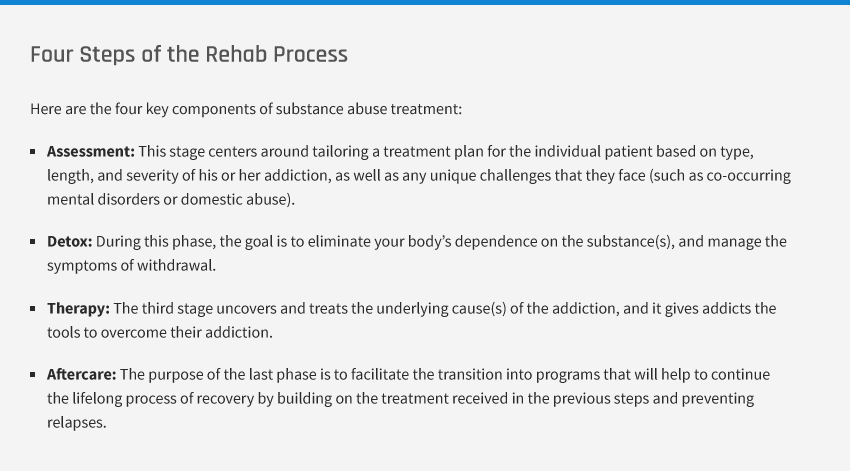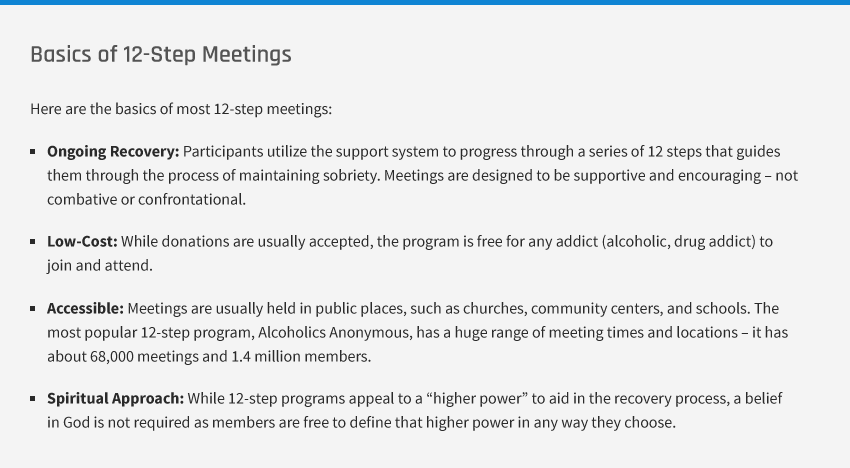An indication that Bernalillo County residents are suffering from high levels of substance abuse is that the area has a much higher percentage of deaths induced by drugs and alcohol than the United States as a whole. From 2008 to 2017, 18.30% of deaths in Bernalillo County were caused by drugs or alcohol – a percentage that is 5.58% higher than the number of drug and alcohol-related deaths across the United States during the same time period. Tragically, from 2008 to 2017, 131.2 of every 100,000 Bernalillo County residents died from a fatal overdose of drugs or alcohol.
Alcohol, Drug, and other Rehab Centers in Albuquerque, NM
TABLE OF CONTENTS
Getting Help
What to Consider When Choosing a Rehab Center
As you look at treatment options, consider asking yourself the following questions to bring clarity to your search for help:
- Which service setting should I choose? The following guides will help you understand the differences between residential inpatient programs and outpatient programs.
- Do I need a specific type of rehab? Find out if holistic rehabs, rehabs for dual diagnosis, or programs for alcohol and drug detox only are best for you.
- How long should I stay? Read about the differences between short term rehabs (30 days) and longer-term options (60, 90, or 120+ days).
The severity of your addiction, your financial resources, and your unique personal situation will all impact your choice of a rehabilitation facility.
Read our guide to Choosing the Right Rehab to understand better how to make all of these decisions.
The Best Rehabs in Albuquerque, NM
Rehab can be costly, and its price varies depending on where you live and what your needs are. However, even if you do not have insurance, you can still find help breaking free of your addiction. The Substance Abuse and Mental Health Administration (SAMHSA) lists 50 substance abuse treatment centers in the Albuquerque area. Whether a non-profit or for-profit organization, many of these centers are on a mission to provide substance abuse recovery services that are accessible to all regardless of their income. Of these 50 rehabs, The Life Link in nearby Santa Fe received the best overall score according to our five core metrics.

The quality of each facility was evaluated according to these five core metrics. For more insight into our methods, please read this full breakdown of our filtering process and ranking methodology.
1. The Life Link
The Life Link scored 8.5 points out of 10 possible points for its outpatient substance abuse treatment services. Located in Santa Fe, this center fosters a sense of community for all who access its services. The Life Link provides medication-assisted treatment for opioid and alcohol-dependent patients. Along with medication-assisted treatment, patients at this center have access to counseling from a variety of treatment approaches, including cognitive behavioral therapy, trauma-related counseling, rational emotive behavioral therapy, brief intervention, and much more.
Substance abuse doesn’t occur in a vacuum; it often goes hand-in-hand with experiences of trauma or with mental illnesses that are difficult to cope with in the absence of proper treatment. The Life Link offers special programs for patients who struggle with co-occurring mental health issues or past traumas. By coupling those programs with a multitude of ancillary services, this center assists all kinds of patients in gaining a steady footing in life while they address their substance addiction and mental health needs. Patients participating in substance abuse counseling can also benefit from homelessness case management, marital counseling, career counseling, numerous physical and mental health assessments and services, drug screenings, tobacco cessation counseling, housing services, assistance with obtaining social services, and more.
The goal of The Life Link is to provide services to those most in need. Donations and government funding help with the cost of many services, and the center also accepts Medicaid and other state-financed health plans, private health insurance, TRICARE, and Access to Recovery (ATR) vouchers. The Life Link also uses a sliding fee scale to assess costs for patients who must pay for their own care.
- Rehabilitation Services Provided: 10
- Treatment Approaches: 10
- Cost: 8
- Special Programs for Unique Demographics: 4
- Ancillary Services: 8.19
2. HopeWorks Behavioral Health Center
HopeWorks Behavioral Health Center, which includes the Therapy & Healing Arts Center, scored 6.9 points out of 10 points for its inpatient and outpatient substance abuse treatment services for homeless patients. Patients here can easily connect not only with substance abuse treatment but with a wide range of ancillary services, such as mental health screenings, drug screenings, health education and support, social skills development, and more. Since it’s located within a homeless shelter, patients who visit this center may also receive help with very practical needs, such as housing assistance and nutrition services.
At HopeWorks, patients with alcohol use disorders may receive medication-assisted treatment to help with their recovery, but medication for opioid dependency is not offered. Patients with psychiatric disorders can be prescribed appropriate medications to treat their co-occurring mental health conditions. All patients at this center benefit from the range of treatment approaches that are used in counseling, including trauma-related counseling, rational emotive behavioral therapy, brief intervention, motivational interviewing, anger management, cognitive behavioral therapy, and more.
Since the homeless population is diverse, HopeWorks offers services geared toward specific groups, such as transitional aged youth, LGBTQ individuals, clients referred from the court system, survivors of abuse, pregnant women, clients with co-occurring mental health issues, HIV-positive patients, and more. This center does not deny treatment to anyone due to a lack of ability to pay, and it offers a sliding fee scale based on income and other factors.
- Rehabilitation Services Provided: 6.25
- Treatment Approaches: 10
- Cost: 2
- Special Programs for Unique Demographics: 9
- Ancillary Services: 7.56
3. First Nations Community Healthsource Zuni Clinic
The Zuni Clinic location of First Nations Community Healthsource also scored 6.9 out of 10 points for its outpatient substance abuse services. The center, which also has a second location in Albuquerque on Truman Street NE, prioritizes the admission of pregnant women, and it also offers special programs that address the needs of patients who have co-occurring mental health issues. Additionally, the behavioral health department serves adolescents as well as adults, though not all facets of its services are available to adolescents.
To aid in the opioid detoxification and recovery process, Zuni Clinic uses medication-assisted treatment. Patients with any form of substance use disorder can find assistance at this center through the various treatment approaches available, including 12-step facilitation, brief intervention, cognitive behavioral therapy, motivational interviewing, anger management, and more.
Zuni Clinic offers many different forms of medical and behavioral healthcare, so ancillary services that support patients’ holistic health are readily available. Examples of ancillary services offered range from health education screenings and transportation services to family counseling and domestic violence counseling, and much more.
To make its services affordable to a variety of patients, Zuni Clinic accepts many forms of payment, including Medicare, Medicaid and other state-financed insurance plans, private insurance, TRICARE, IHS/Tribal/Urban (ITU) funds, and any other form of government funding for substance abuse programs, as well as self-payment. Patients who must pay for their own care can benefit from a sliding fee scale based on income and other factors.
- Rehabilitation Services Provided: 6.25
- Treatment Approaches: 6.68
- Cost: 10
- Special Programs for Unique Demographics: 3
- Ancillary Services: 9.45
Top-Rated, Low-Cost Treatment Centers in Albuquerque
| Rank | Rehab | Total Score | Contact Information |
| #1 | The Life Link | 8.5 | 2325 Cerrillos Road Santa Fe, NM 87505 Main Tel: 505-438-0010 |
| #2 | HopeWorks Behavioral Health Center | 6.9 | 1201 3rd Street NW Albuquerque, NM 87102 Main Tel: 505-764-8231 |
| #3 | First Nations Community Healthsource Zuni Clinic | 6.9 | 5608 Zuni Road SE Albuquerque, NM 87108 Main Tel: 505-262-2481 |
| #4 | NM Department of Health Turquoise Lodge Hospital | 6.4 | 5400 Gibson Boulevard SE Albuquerque, NM 87108 Main Tel: 505-841-8978 |
| #5 | Streetwise, Inc. | 5.6 | 3232 Candelaria Road NE Albuquerque, NM 87107 Main Tel: 505-323-3785 |
| #6 | First Choice Community Health Care Behavioral Health | 5.2 | 2001 N. Centro Familiar SW Albuquerque, NM 87105 Main Tel: 505-873-7400 |
| #7 | Presbyterian Medical Services Cuba Health Center | 3.8 | 6349 U.S. Highway 550 Cuba, New Mexico 87013 Main Tel: 575-289-3291 |
| #8 | A New Awakening Rio Rancho | 3.3 | 1207 Golf Course Road, Suite C Rio Rancho, NM 87124 Main Tel: 505-994-4100 |
Finding a Substance Abuse Treatment Center in Albuquerque
Start by determining your coverage
Learning the details of your health coverage is the first step in determining your best rehabilitation option. Reach out to your private or healthcare marketplace insurance provider to discover which centers your insurance plan enables you to utilize. If you want to learn if you qualify for low-income Medicaid coverage, visit the New Mexico Human Services Department website and reach out to the appropriate listed contacts. No matter the type of coverage you have, public and private insurance companies must cover substance abuse treatment for qualified individuals
Use our database to find a treatment center near you
The tool below shows all treatment centers in the state of New Mexico that the Substance Abuse and Mental Health Services Administration (SAMHSA) recognizes. Enter your zip code and select the correct filter icon to find treatment centers located near you.
Schedule an assessment
If you plan to access treatment covered by insurance, having your needs assessed by a qualified therapist or counselor will be essential. Your primary care physician can refer you for a substance abuse assessment, but most facilities also provide assessments. Feel free to contact companies in our database above to find out if they will provide assessment services.
Find a Rehabilitation Facility Near You
Filter Your Search
Popular Searches
Type Of Care
Treatment Approaches
Service Setting
Age Groups Accepted
Ancillary Services
Facility Operation
Facility Smoking Policy
Gender Accepted
Language Services
License Certification Accreditation
Payment Assistance Available
Payment Methods and Insurance Accepted
Special Programs Groups Offered
What to Expect in Rehab
Addiction treatment is a complex industry that encompasses numerous techniques and philosophies. The science of studying addiction shifts and improves over time; however, most treatment programs have the below core elements of rehabilitation in common.

To learn more about what to expect in rehab, read our guide on the addiction rehabilitation process.
Finding Aftercare in Alburquerque
The rehabilitation process is a lifelong journey, and the chances of relapse increase if rehabilitated patients do not seek out aftercare. Different aftercare options provide flexibility to people with a variety of schedules and lifestyles. Sober living homes, group therapy, and follow up visits for continued therapy are just a few of the available options. Research indicates that continued participation in aftercare activities dramatically improves the long-term success of those who complete substance abuse treatment.
The most well-known form of aftercare is the Alcoholics Anonymous (AA) 12-step process. This program for recovery from alcohol addiction is a nationwide support group. Many other organizations, most notably Narcotics Anonymous (NA), which addresses drug addiction, follow a similar path of structured group support.

Contact the appropriate local organization to find an AA or NA meeting near you
Our directory tool below will help you locate your local Alcoholics Anonymous (AA) or Narcotics Anonymous (NA) organizations. These organizations post meeting times and locations. The details may change periodically, so it’s best to call ahead and verify the information before attending your first meeting.
Alcoholics Anonymous (AA) and Narcotics Anonymous (NA) Database
| Name | City | Program | Telephone | Spanish Hotline |
|---|
Sober Living Homes
Sober living homes, which are also called recovery residences, give recovering addicts a safe and sober place to live and grow when re-entering society after a rehabilitation stay. These homes are completely drug- and alcohol-free, positive environments that encourage personal responsibility. Research shows that integrating into communities like this – that incentivize building life skills and stable relationships – helps patients to establish a fulfilling life beyond addiction.
Sober living residents must care for their rooms and maintain their sobriety, and they are usually also required to pay a low rent fee. All residents also attend in-home support groups. Residents might stay for a few weeks, but they are often welcome to remain as long as several years if they follow all house rules.
You can find sober living homes in Albuquerque by checking our database, or you can select the appropriate filter from our tool above. Alternatively, head to our guide on sober living homes to learn more about them and search for a certified recovery residence in your area.
Substance Abuse in Albuquerque
Most racial minorities in Bernalillo County disproportionately struggle with opioid abuse
In Bernalillo County, of which Albuquerque is the county seat, opioid-related non-fatal emergency department (ED) visits have occurred at much higher prevalences among most minorities than they have among the majority Caucasian population in the area. African American and Hispanic residents are the most affected, and Native American residents are also suffering from slightly elevated rates compared to Caucasian residents of the county. Asian American and Pacific Islander residents have a lower prevalence of opioid-related non-fatal ED visits than the Caucasian majority, however.
Between 2013 and 2017, per 100,000 county residents, African American residents sought opioid-related treatment in emergency departments at a prevalence of 190.4, whereas the prevalence for Hispanic patients was 76.1, for Native American patients was 49.4, for Caucasian patients was 44.7, and for Asian American and Pacific Islander patients was 22.2. This data reveals, among other trends, that the prevalence of opioid-related non-fatal emergency department visits for African American patients was a staggering 4.31 times higher than that of Caucasian patients during that time period.
| All Residents | African American Residents | Asian American Residents | Caucasian Residents | Hispanic Residents | Native American Residents | |
|---|---|---|---|---|---|---|
| Bernalillo County | 69.0 | 190.4 | 22.2 | 44.7 | 76.1 | 49.4 |
| New Mexico | 50.6 | 128.7 | 18.7 | 35.8 | 55.9 | 25.4 |
| Percent Difference | +30.8% | +38.7% | +17.1% | +22.1% | +30.6% | +64.2% |
According to U.S. Census estimates, only 3.4% of Bernalillo County identifies as African American, yet, from 2013 to 2017, African American patients comprised 7.8% of opioid-related non-fatal emergency department visits. The startling differences in these statistics between African American and Caucasian patients and the less stark but still concerning disparities among other racial groups reflect the need for more opioid abuse outreach, education, and affordable treatment among minority communities. There may not be one “right” answer for addressing racial and ethnic differences in substance abuse rates, but culturally sensitive treatment and outreach is needed in Bernalillo County.
Substance abuse among high school students has decreased more dramatically in Bernalillo County than it has in New Mexico
During odd-numbered years, high school students across New Mexico participate in the Youth Risk and Resiliency Survey, which collects data on current substance abuse, as well as many other youth behaviors. Data from the past several years indicate that substance abuse is decreasing among this population in Bernalillo County. As of 2017, 25.4% of high school students abused alcohol, 26.4% abused marijuana, and 5.7% abused prescription opioids. From 2013 to 2017, abuse of alcohol, marijuana, and prescription opioids among high school students in Bernalillo County all decreased: alcohol abuse fell 25.1%, marijuana abuse fell 20%, and prescription opioid abuse fell 43.6%.
County and State Substance Abuse Among High School Population, 2013-2017
| Alcohol | Marijuana | Prescription Opioids | |
|---|---|---|---|
| Bernalillo County 2013 | 33.9% | 33.0% | 10.1% |
| Bernalillo County 2017 | 25.4% | 26.4% | 5.7% |
| Percent Change | -25.1% | -20.0% | -43.6% |
| New Mexico 2013 | 28.9% | 27.8% | 8.5% |
| New Mexico 2017 | 26.2% | 27.3% | 6.9% |
| Percent Change | -9.3% | -1.8% | -18.8% |
In 2013, state percentages of alcohol, marijuana, and prescription opioid abuse by the high school population were lower than the percentages in Bernalillo County. Between 2013 and 2017, state percentages continued to drop, but, comparatively, Bernalillo County percentages decreased even more. As a result, by 2017, Bernalillo County percentages in all three categories had fallen below state percentages, despite the opposite having been true in previous years. Substance abuse among high school students in Bernalillo County is still alarming because statistics illustrate that many in this particular population are in danger of developing lifelong addictions; however, the encouraging decreases in recent years indicate that community stakeholders’ efforts to reduce substance abuse among youth are bearing fruit.
Drug and alcohol overdoses occur at a higher percentage in Bernalillo County than nationally
18.29%
of Bernalillo County deaths caused by drugs and alcohol
12.71%
of U.S. deaths caused by drugs and alcohol
In many highly populous counties across the United States, the ratio of drug overdoses to alcohol overdoses is roughly 1:1, but the ratio is closer to 3:1 in Bernalillo County. Drugs are responsible for 75.35% of all fatal overdoses in Bernalillo County, with alcohol responsible for the remaining 24.65%. Of all counties with more than 100,000 residents in New Mexico, only Doña Ana County has a higher percentage – 82.05% – of overdoses caused by drugs. The elevated ratio of fatal drug overdoses in Bernalillo County speaks to high levels of untreated drug addiction, and it may indicate unusually easy access to drugs compared to other counties.
Drug and Alcohol-Induced Deaths in Bernalillo County Between 2008 and 2017
| 0-17 | 18+ | All Ages | |
| Drug-Induced Deaths in Bernalillo County | 17 | 8,760 | 8,778 |
| Alcohol-Induced Deaths in Bernalillo County | 6 | 2,871 | 2,877 |
| Total Deaths in Bernalillo County | 819 | 62,864 | 63,683 |
| Percentage of Drug & Alcohol-Induced Deaths in Bernalillo County |
2.81% | 18.50% | 18.30% |
Source: CDC Wonder
Key Indicators of Substance Abuse
The full impact of substance abuse on an area can be challenging to gauge. Addicts who don’t seek help due to denial, stigma, or other barriers do not appear in substance abuse statistics unless the city or county conducts a thorough anonymous survey of residents. Truly comprehensive surveys that capture the full breadth and depth of substance abuse are uncommon in most areas. Nevertheless, by considering several data points in related areas of society, we can still understand the larger impact of substance abuse in Albuquerque. We looked at reports on alcohol-related driving deaths, homelessness, and suicides to give a broader view of the substance abuse issues that impact Albuquerque.
Bernalillo County and New Mexico have comparable rates of alcohol-related driving deaths and excessive drinking
Alcohol-related driving deaths accounted for 30% of all driving fatalities in Bernalillo County between 2013 and 2017, amounting to a total of 112 alcohol-related driving deaths. Bernalillo County’s rate of alcohol-related driving deaths is comparable to New Mexico’s rate of 31%.
30%
of Bernalillo County driving fatalities related to alcohol, 2016
31%
of New Mexico driving fatalities related to alcohol, 2016
In some cases, alcohol abuse levels can be high in an area, yet alcohol-related driving deaths remain low if prevailing social mores dictate the use of designated drivers or riding sharing technology. In the case of Bernalillo County, however, the statistics on alcohol abuse closely echoed the rate of alcohol-related driving deaths. The rates of both alcohol-related driving deaths and excessive drinking in Bernalillo County were only 1% less than the state percentage. In 2016, Bernalillo County’s percentage of adults who drink excessively was 16%, while the percentage for New Mexico was 17%.
Suicide is far more prevalent in Bernalillo County and New Mexico than in the United States
20.8
suicides per 100,000 Bernalillo County residents, 2013-2017
13.5
suicides per 100,000 United States residents, 2013-2017
The state of New Mexico experiences a higher prevalence of suicide than the United States as a whole. In New Mexico, there are 21.9 suicides for every 100,000 residents, compared to 13.5 suicides for every 100,000 residents in the United States. The prevalence in Bernalillo County is slightly lower than the state average, with 20.8 suicides per 100,000 residents. Since 21 out of 33 counties in New Mexico have a higher prevalence of suicide than Bernalillo County, the county can potentially be considered mentally healthier than the average by state standards, but, compared to the prevalence at the national level, the loss of life to suicide remains very disturbing.
Within New Mexico, medical examiners deemed 10% to 15% of all drug overdoses to be intentional self-poisoning between 2010 and 2014. While more recent data specific to Bernalillo County is not available, the level of substance abuse involved in suicides at the state level gives us an approximate indication of the level we might expect to find in the county.
Substance abuse has connections to suicide rates in other ways as well. The topic is very complicated, but researchers usually agree that mental distress and suicidal thinking can lead to substance abuse as a form of self-medication. Conversely, substance abuse may sometimes lead to mental illness or make existing mental illness worse. Many substance abuse treatment programs address co-occurring mental illnesses, such as depression, since the two conditions are heavily linked. If you or a loved one are currently struggling with suicidal thoughts, you can call the National Suicide Prevention Lifeline at 1-800-273-8255. For the lifeline in Spanish, call 1-888-628-9454.
Albuquerque homeless population struggles with substance abuse more than the general U.S. population
28.91%
of Albuquerque homeless with a substance use disorder, 2017
8.4%
of U.S. adult population with a substance use disorder, 2014
In 2017, surveyors counted 1,318 homeless persons in Albuquerque, an increase of 12.55% from 2015. Turning to substance abuse is a flawed but common coping mechanism for those persons who find themselves suddenly homeless and, thus, feel ashamed, discouraged, or undignified in their new situation. In 2017, 28.91% of the Albuquerque homeless population had a substance use disorder. In contrast to this elevated percentage, just 8.4% of the adult population of the United States had a substance use disorder in 2014 when a national survey was last conducted by the Substance Abuse and Mental Health Services Administration (SAMHSA).
The rising rate of homelessness in Bernalillo County may be partly explained by its high housing costs. In 2017, 17% of county residents spent 50% or more of their income on housing, a condition which is termed a “severe housing cost burden.” The percentage of residents suffering from a severe housing cost burden across New Mexico as a whole is lower at 14%, and among New Mexico counties, Bernalillo County is tied with Hidalgo County and Mora County as having the third-highest severe housing cost burden in the state.
Take Action
Multiple resources in the Albuquerque area offer life-changing help to those currently suffering from substance dependency. Use our tool to discover a nearby rehabilitation center that can help you determine your insurance coverage and your rehab needs. Low-cost centers often provide substance abuse treatment services at reduced costs – or even for free – if you do not have insurance or feel like you are unable to afford treatment.


